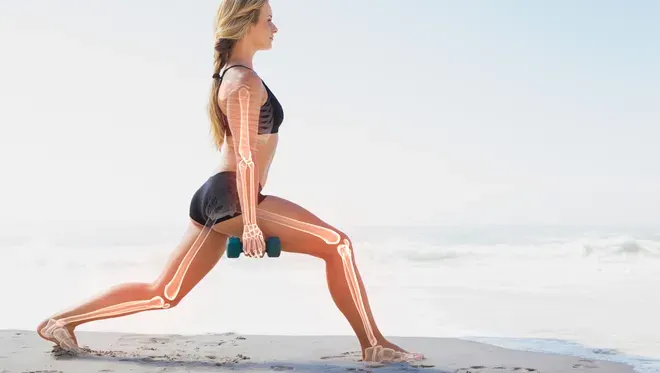
Everyone has bones, no matter who you are or where you are, but not everyone understands the importance of the changes that take place inside the body. Walking, sleeping and having safe organs are all possible with the help of our bones.
Your bones give your body its structure, and along with the mobility they enable us to have, they are invaluable in protecting and perpetuating human life, in addition to protecting your organs. If you think you can count the number of bones you have, don’t try. It’s too complicated.
How many bones are in the human body?
According to kidshealth.org, by the age of 25, humans have 206 bones. They are born with about 300 bones and cartilage, which “fuse” together over time to form the mature adult body.
The soft, delicate spots on the bones of infants shortly after birth are among those that harden and fuse during early life.
This bone growth is driven by calcium intake during childhood and replaces the soft-feeling cartilage with healthier, strengthened bones. During our maturing years, this bone also shapes our body shape and skeletal structure.
Make sure you stay healthy: How many calories should you eat a day?
Don’t over-caffeinate: Is coffee healthy or not? How much is too much?
Just curious? : We are here to answer your daily questions.
Do other bones protrude?
However, the bones of the body are not evenly distributed from head to toe. Some bones, such as the longest bone, the femur in the thigh, take up a large portion of the body. Other parts of the body, such as the hand, are made up of 27 smaller, more complex bones that allow your hand to function and grip as it does. The feet are also packed with different bones – 26 of the 206 bones in your body.
But your hands aren’t where your smallest bones are located. According to verywellhealth.com, that spot is occupied by the stirrup, a small bone in the inner ear that helps conduct sound vibrations.
Maintaining a healthy lifestyle: 10% of Americans are nutritionally deficient
Having trouble staying healthy? : The extent to which the economy affects healthy eating
What are the different types of bones?
But the 206 bones in your body are not just distinguished by name. As betterhealth.vic.gov.au explains, long bones, short bones, flat bones and irregular bones are the four categorized bone types.
Long bones, such as the humerus, fibula or tibia, are the bones that can move and carry the weight of the body. Short bones, including the wrist bones of the hand and the tarsus of the foot, can also improve movement while stabilizing the wrist and ankle. Flat bones are usually found in the skull and include your frontal and occipital bones. Finally, irregular bones are bones that do not conform to a shape, such as your spine.




222